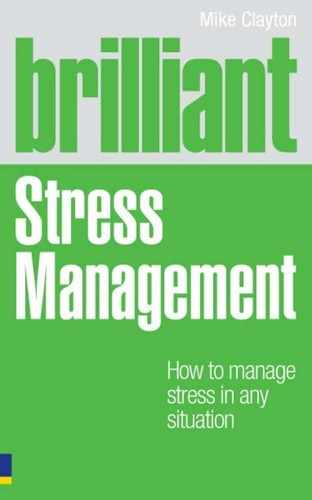172 brilliant stress management
A word of warning
Please do not try to over-interpret a single gesture. Look for
patterns and clusters of signs. A single gesture usually means
nothing: I may touch my brow because I disagree, or maybe
because I have an itch. I may hug my arms around my body
because I am anxious, or because I am cold.
Recognising avoidance
Conicts tend to escalate when people avoid contentious issues
that need to get resolved, so the stakes have increased by the
time we confront them. So, you know that there is a problem,
but you don’t address it and, despite your hopes, it does not
go away. If you don’t discuss it, the distrust and negative feel-
ings towards the other person increase, as you start to fantasise
about their motives and intentions, which is all you can do in the
absence of real information.
This causes you to lose perspective on the real issue and start to
attach blame for the situation. You hear yourself talk about the
other person in abstract terms and with sweeping generalisa-
tions. They have ceased to be Jack or Jackie and are now he or
she, who is ‘always this’ and ‘never that’. So the tensions grow
and the conict escalates, even if the issue itself has not devel-
oped or grown in any way. Familiar?
Five approaches to dealing with conflict
We have ve fundamental approaches to dealing with conict.
Approach 1: Step away
Of course, avoiding conict is sometimes the right thing to do.
Step away when you cannot possibly win, when the issue really
is not important, or if the emotional temperature is too high,
and you want to wait for a better time to engage with another
approach.
Manage stress caused by conflict 173
But do not use this as a tactic merely to put off the inevitable, or
to goad the other person. Both will probably have the effect of
escalating the conict to no benet for either party.
Approach 2: Make concessions
Making concessions to the other person is a way of de-escalating
the conict, but beware that each concession may encourage
manipulative behaviour that seeks a further concession. So, make
each new concession smaller than the last – about half of the
value. This creates a self-limiting process. This is a good strategy
when you realise that ‘winning’ on this issue is less important than
maintaining good relations and can also sometimes set up a sense
of obligation that can mean you will win concessions ‘next time’.
If there can be no next time, then this approach has less value.
If you nd yourself using this approach a lot, check with yourself
that it is fully justied each time, and not a sign of low self-
esteem. Making concessions can be a passive behaviour, where
you do not expect the concession to be reciprocated. Then it
becomes appeasement.
Approach 3: Play to win
When the outcome really matters to you and you have no qualms
about the risk of further escalation, then playing to win will be
your preferred approach. Use this strategy when you know you
are right and when there is no time for debate, or when there
is no chance of defusing the conict, and getting a resolution
quickly will minimise the harm.
But avoid the cycle of aggressive or bullying behaviour when
winning becomes an end in itself, and you do not consider the
consequences of the approach, nor the rights and wrongs of the
outcomes you are pressing for. This will lose you respect as well
as friends, and will ultimately fail when you come up against
someone bigger and stronger than you are.

174 brilliant stress management
Approach 4: Some give and take
‘I’ll give up something, if you give up something too’ is a good
solution if you need to defuse tension and work towards an
acceptable compromise. It will not leave either party truly happy,
as they survey what they have given up, but neither will it leave
them seriously aggrieved if the parties have behaved fairly. Whilst
Approach 2 is about making unilateral concessions, here they are
balanced, and this approach should satisfy both parties’ needs
for a sense of equity. It is broadly cooperative and can get to
a nal position relatively quickly, once each is in the mood to
concede.
Don’t get too hooked on this approach or it will become a
game that you play – setting up bargains and doing deals. If this
happens, you will associate victory with getting a result, rather
than with getting a good result. This is the equivalent, for nego-
tiators, of selling at a loss.
Approach 5: Go for ‘win-win’
The gold standard for conict reso-
lution is a result where both parties
feel they have won, and got every-
thing they wanted – and more.
Instead of trading concessions as
you do in Approach 4, here you are
looking to add new things to the discussion to create advantages
for each other. This is a time-consuming tactic that takes hard
work and commitment, but the rewards can be huge in building
up trust and respect.
Use this approach when the outcome is very important, and so is
an excellent long-term relationship. It means investing in under-
standing each other and working together collaboratively. There
may well be setbacks along the way and you may seek outside
help in the form of a mediator, to support the process.
the gold standard for
conflict resolution is a
result where both parties
feel they have won
..................Content has been hidden....................
You can't read the all page of ebook, please click here login for view all page.
